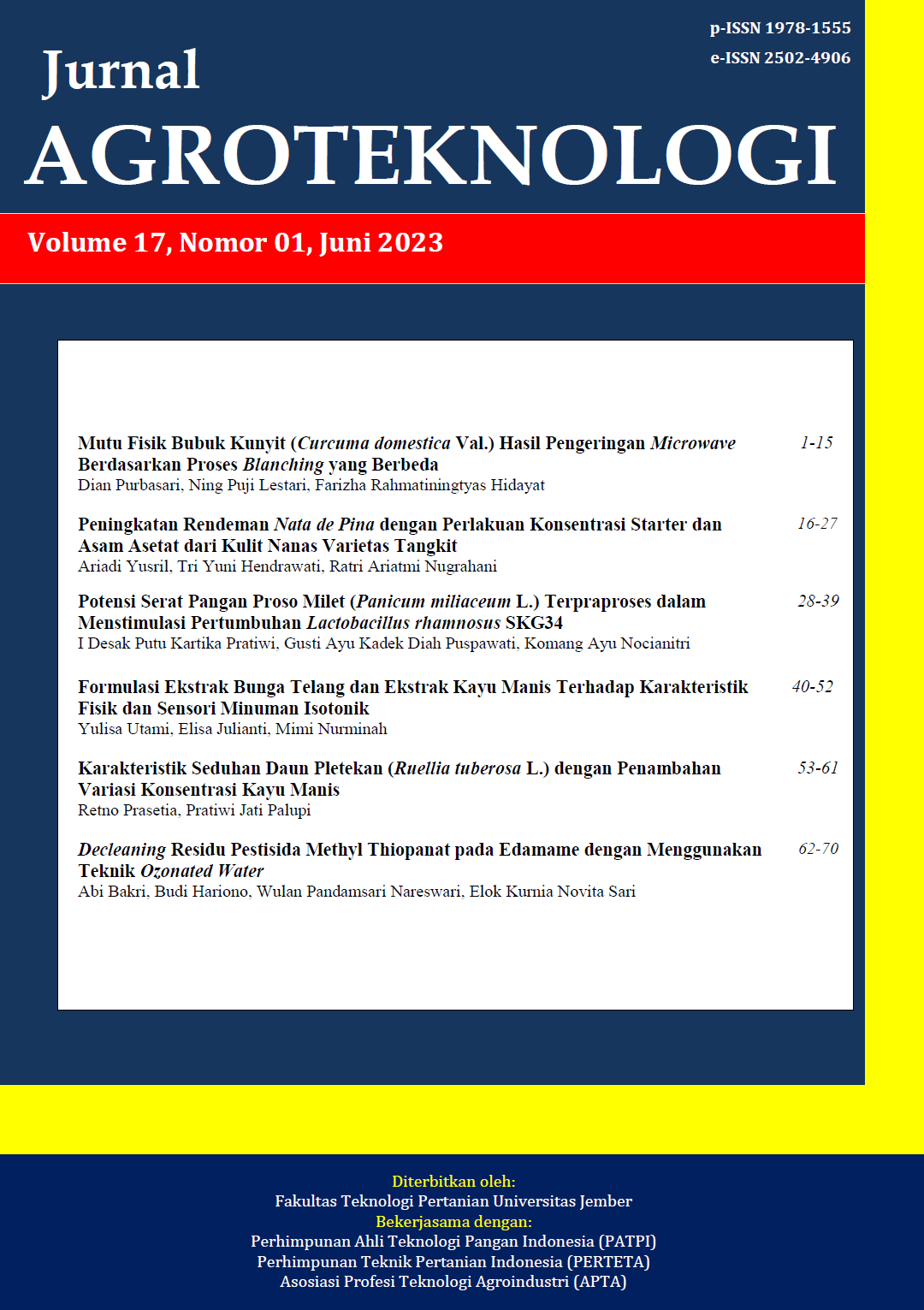Mutu Fisik Bubuk Kunyit (Curcuma domestica Val.) Hasil Pengeringan Microwave Berdasarkan Proses Blanching yang Berbeda
DOI:
https://doi.org/10.19184/j-agt.v17i01.28426Abstract
Curcuma domestica Val. is a kind of spice that can be processed become several kinds of processed products such as flavor and herb. The height of water content and water activity in Curcuma causes damage and decrease of curcuma quality. One of the correct handles to get qualified products with good quality and to decrease the damage is by doing blanching process and drainage using the microwave. This study aimed to determine the physical quality characteristics of dried turmeric based on the difference in microwave power and the type of blanching process. The experiment used in this study was a completely randomized design with two factors, namely: microwave power (307, 402, and 577 W) and types of blanching (hot water and steam). The data obtained was characteristic of the physical quality of turmeric powder comprising color, agglomeration angle, precipitation density, water absorption, and oil absorption. The result of the study indicated that the water content of fresh turmeric was between 92.11-94.41% and the dried turmeric was between 3.48-4.56%. The characteristic of physical quality of turmeric powder has brightness level (L) between 61.1-66.5; reddish level (a) between 13.2-18.; yellowish level (b) between 40.8-53.0; precipitation density between 0.31-0.36 g/cm3; agglomeration angle between 42.7o-46.1o; the water absorption between 4.6-5.8 mL/g; and the oil absorption between 1.43-1.63 mL/g. Microwave-dried turmeric powder with both blanching processes produced physical quality that met SNI 01-7084-1995 standards with brightness, reddish, yellowish level, bulk density, and agglomeration angle in steam blanching process higher than hot water blanching.
Keywords: completely randomized design, drying, hot water, steam, turmeric powder
Downloads
Downloads
Published
Issue
Section
License
Jurnal Agroteknologi has CC-BY-SA or an equivalent license as the optimal license for the publication, distribution, use, and reuse of scholarly work. Authors who publish with this journal retain copyright and grant the journal the right of first publication with the work simultaneously licensed under a Creative Commons Attribution-ShareAlike 4.0 International License that allows others to share the work with an acknowledgment of the work's authorship and initial publication in this journal.
 JURNAL AGROTEKNOLOGI
JURNAL AGROTEKNOLOGI 








.png)
